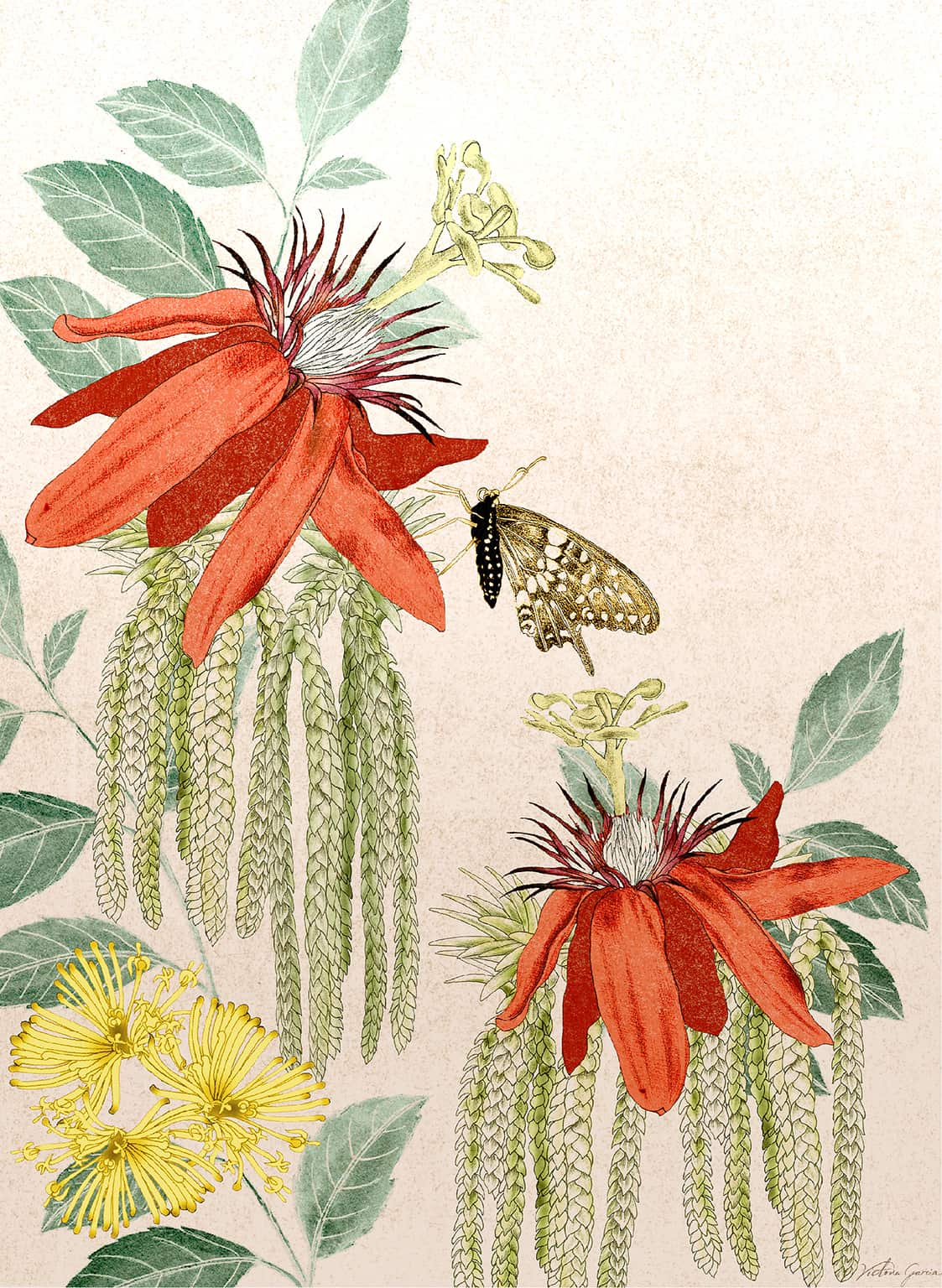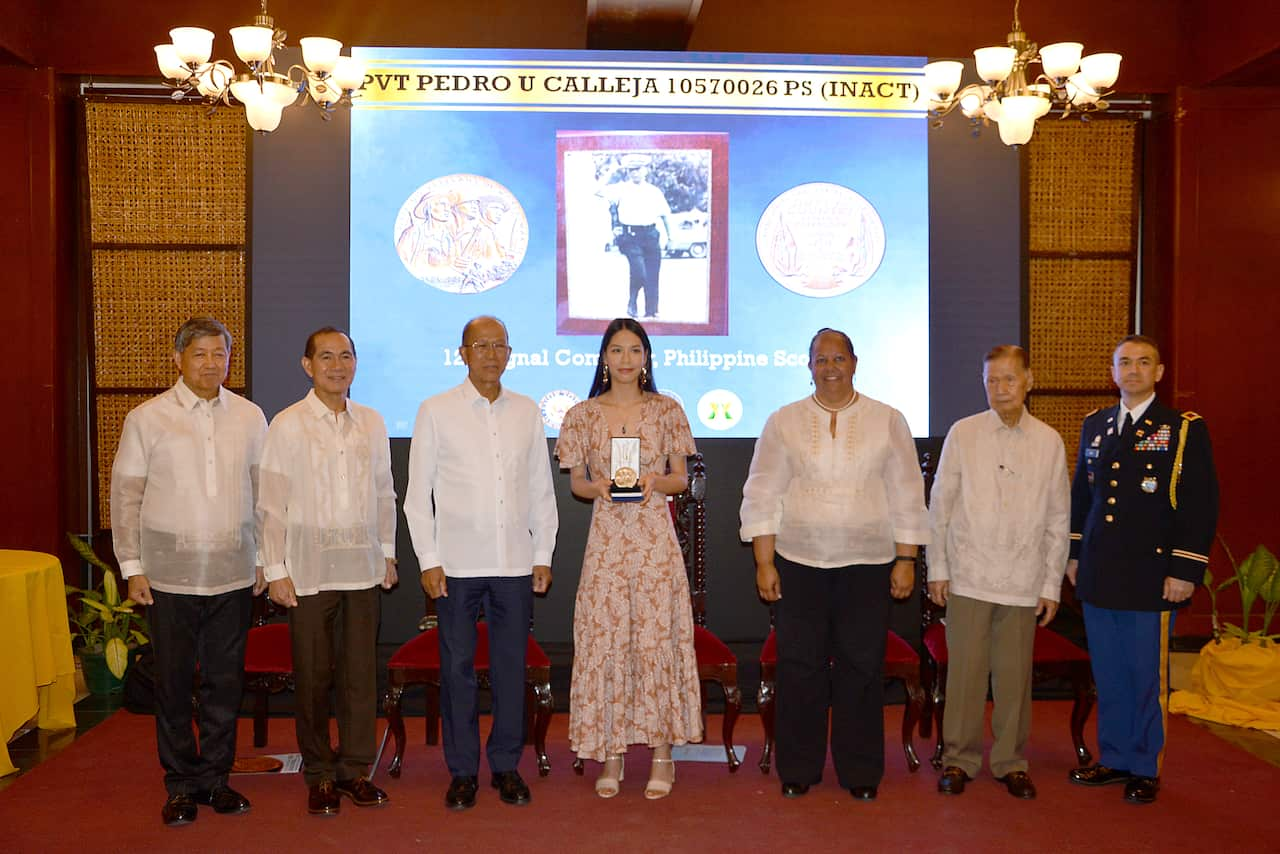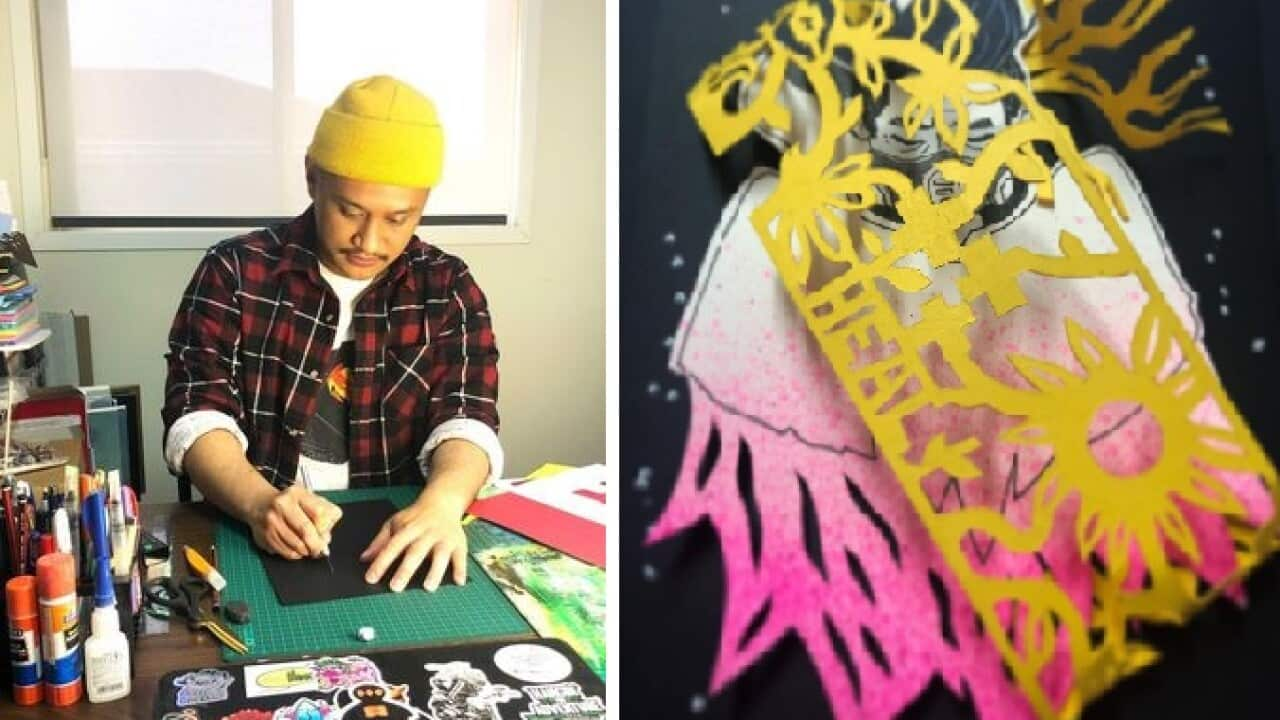Highlights
- Artist and textile designer, Victoria Garcia, has designed fabrics and textiles for major Australian fashion labels.
- Victoria is catching up on stories about her heritage and has found them to be a source of artistic inspiration.
- Her latest textiles designs featuring Filipino flora and fauna was inspired by a Filipino botanist.
"I'm interested in the spirit of the plant," says 33-year old Victoria Leonisa Garcia of her botanical paintings, a glorious profusion of blooms, leaves, insects, and animals.
Working from her studio in Sydney, the artist-illustrator's designs have appeared on gallery walls around Australia and textiles for major fashion labels like Sass and Bide, Camilla and Marc, and Anthropologie.

Victoria Garcia at work in her studio. Source: Supplied by Victoria Garcia
But her latest creative work sees Victoria returning to her roots, despite struggling to connect with her Filipino background during her childhood in Southwest Sydney.
"It was tough. I think there's a lack of resources about the Australian diaspora," she says. "It wasn't easy to come by [Filipino] books, and we grew up in a pre-internet time, so I didn't have a connection in terms of culture."
But thanks to the internet and more access to literature, Victoria is catching up on stories about her heritage and has found them to be a source of artistic inspiration. After all, she describes her ethos as "expressing untold stories through art", and the stories behind her latest creations are just as fascinating as the artwork.
An artist's tribute to a Filipino scientist
Victoria's love of the natural world is a recurring motif in her designs, a passion encouraged by her father.
"My dad has always had this love for nature," she says. "Recently, I took a trip with him to the Philippines. We went hiking to places like Mt Makiling, which is a biodiversity hub. My dad knew what all the plants were and told me what they were used for."

A painting from Victoria's series, "Plants of the Philippines" Source: Supplied by Victoria Garcia
It was on that same trip that she learned about Leonard Co, the Philippines' premiere ethnobotanist, who was later to become an inspiration for her work.
"From his research, he started this massive digital archive that anyone can access. One of his goals was to explore natural medicine and make this information available to everyone," says Victoria.
But in 2010, Leonard Co was gunned down while doing fieldwork in Leyte.
"It's a sad story because he was mistaken for being a guerilla fighter," says Victoria. "It would have been such a loss to the scientific community. This man had so much knowledge." Inspired by Leonard Co, Victoria has begun a series of art prints called "Plants of the Philippines", a collection she adds to every time she visits the Philippines.
Inspired by Leonard Co, Victoria has begun a series of art prints called "Plants of the Philippines", a collection she adds to every time she visits the Philippines.

A painting from Victoria's series, "Plants of the Philippines" Source: Supplied by Victoria Garcia
She makes it clear they are artworks, not scientific illustrations.
"It's about the spirit of the plant," she says. "I think it's so interesting how indigenous groups have this connection to nature that's more spiritual than scientific."
Her skilful illustrations also feature endangered Philippine animals such as the Visayan Leopard Cat, and Spotted Deer.

Visayan Leopard Cat, printed on a silk scarf, by Victoria Garcia Source: Supplied by Victoria Garcia
Discovering her lolo was a war hero
With a natural interest in traditional Filipino clothing and a background in textiles and costume, perhaps it was only a matter of time before Victoria started designing her Filipiniana fashion collection.
"I love seeing people's photos of their lolos and lolas and how people dressed in those times," says Victoria.
But what ultimately pushed her towards it was learning about her grandfather, Pedro U. Calleja, and his involvement in World War II in the Philippines. "I always knew that he'd been a soldier, but my mom didn't really talk about it as it would've been quite traumatic," she says. "As I got older and had access to the internet, I read about World War II and what Filipino soldiers went through. My lolo survived the Bataan Death March, and the trials of being a prisoner of war."
"I always knew that he'd been a soldier, but my mom didn't really talk about it as it would've been quite traumatic," she says. "As I got older and had access to the internet, I read about World War II and what Filipino soldiers went through. My lolo survived the Bataan Death March, and the trials of being a prisoner of war."

Victoria's lolo, Pedro Callejo, a World War II soldier and survivor of the Bataan Death March. Source: Supplied by Victoria Garcia
As she researched further, she made a startling discovery: her grandfather was eligible for the US Congressional Gold Medal, the highest expression of appreciation bestowed to an individual by the US Congress.
Victoria explains that during the war in 1941, Filipino soldiers who fought with the American military were promised citizenship and financial benefits by the US government, a promise that was never fulfilled.
"[But] I discovered that President Obama passed an act [in 2009], finally recognising contributions of Filipino soldiers," says Victoria. "I thought to myself, if I were my lolo, and my granddaughter had this information, I would want to have that medal!" After a year-long application process, Victoria and her family were thrilled to be invited to an awards ceremony in Camp Aguinaldo, Quezon City where Victoria received her grandfather's posthumous award in his honour.
After a year-long application process, Victoria and her family were thrilled to be invited to an awards ceremony in Camp Aguinaldo, Quezon City where Victoria received her grandfather's posthumous award in his honour.

Victoria receiving her grandfather's Congressional Gold Medal in his honour at Camp Aguinaldo Source: Supplied by Victoria Garcia
It was a proud moment for her, but she still wishes she had been dressed better for the occasion.
"We were asked to wear traditional Filipiniana. We didn't have anything. I couldn't find anything that I wanted to wear," she says.
Afterwards, she set herself to work designing her own Filipiniana, telling her lolo's story through the bespoke textiles she's designing for the collection. Though she's staying true to traditional shapes and silhouettes, she's adding a few contemporary twists, such as the inclusion of a 'terno suit'.
"It just felt very natural to start looking into making my own Filipiniana and tell these stories through clothes," she says. "I'm just designing things that I would want to wear."
Fashion is about storytelling and connection

Victoria poses in one of the ternos she is developing for her Filipiniana collection. Source: Supplied by Victoria Garcia
As an immigrant who felt pressure to assimilate, Victoria wants her fashions to explore the different ways of being Filipina.
"We're in a time where people can celebrate who they are and not be afraid to express it. I think that's such an amazing thing, and we should lean into that," she says.
Although fashion can seem intimidating, she thinks we should see it as something we can all participate in.
"Fashion can be so mean and exclusive; when really, it's an opportunity to be about culture, language, and connection. Hopefully, that's what this [Filipiniana project] could be. Finding ways to tell our stories," she says.
She hopes to build a social enterprise, teaching the community how to make garments along with other accessible ways to make art.
"Everyone has a right to embrace their culture," she says.









